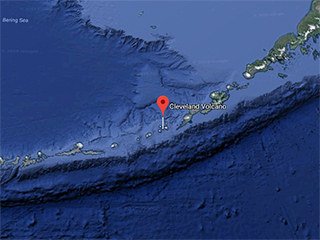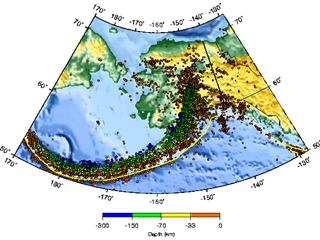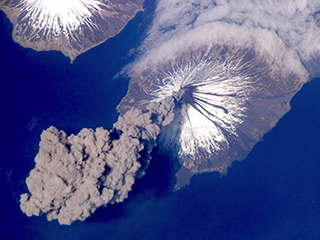Prelude
The movement of and interaction between lithospheric plates is described by the theory of Plate Tectonics. Since the 1960's, scientists have described various geologic phenomena using models based on this theory. Tested again and again, various aspects of Plate Tectonics have successfully explained how continents move, why volcanoes erupt and earthquakes occur, etc. (see Figure 10-1). Movement of the plates over geologic time can even be linked to the development of life on Earth, its glaciations, etc.
|
Figure 10-1. Tectonically and volcanically active Alaska. At left, a Google map of part of the Aleutian Islands, an active island arc formed by subduction of the Pacific tectonic plate beneath the North American plate. At center, the historical seismicity of the Alaska region (U.S. Geological Survey). At right, volcanic eruptions are often indicators of active tectonics, like the May 2006 eruption of Cleveland Volcano in the Aleutian Islands of Alaska (photographed from the International Space Station / NASA). Remember to click on the highlighted images to see larger versions. |
||
What Will You Do Today?
|
Describe the characteristics of tectonic plates and tectonic processes, including plate geometry and motion, seismic activity, etc. |
A. What's Inside the Earth? - Get familiar with the structure of Earth's interior
B. Earth's Seismic Activity - Learn about seismic activity around the world
C. Tectonic Plates & Their Movement - Describe and interpret tectonic plates and their movement
D. Mantle Plume Hot Spots - Explore the importance of hot spots, like the one that formed the Hawaiian Islands and Emperor Seamounts



